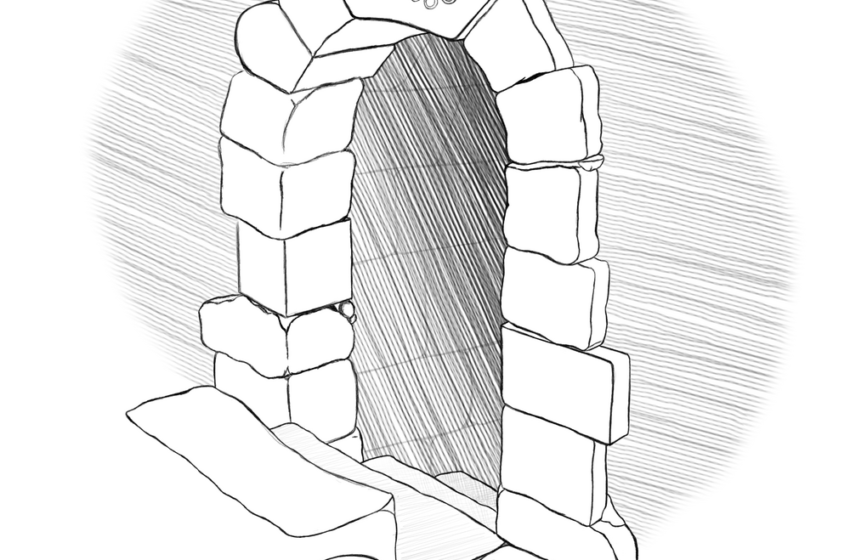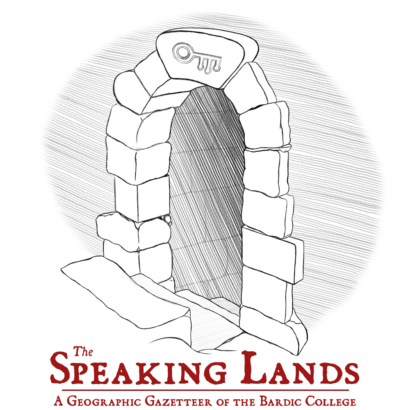We’ve got deep worldbuilding geekery today, folks, it’s the entry for the Sylvan Diaspora! This is one of my favorite undergirding structures of the Speaking Lands, a little bit of fiction that does a whole lot. The Sylvan Diaspora explains why there are so many peoples in so many places. It is the bedrock for the cultural histories of about half of the Speaking Peoples. It even helps explain why the sylvan alphabet is so widespread and communication is relatively easy.
It also helps establish a foundation in the setting that much of the way things are now is built on top of people in power being terrible to people without power. These realities are so far back and so deeply embedded that fixing them isn’t something that can be done with a pat answer. Instead, you’ve got to do the work—or more specficially, play the game, and figure out what’s the right solution for the specific situation in front of the players.
Like I said: deep geekery, laced with a nice tasty worldbuildy flavoring. Enjoy!
—
Sylvan Diaspora

This centuries-long and arguably still ongoing movement of peoples is centered on the Lorathan Forests and the people ejected, exiled, pressured, or fleeing from the region. Much of the sylvan diaspora moved people into the neighboring Norsteppes and Mergather Gulf, although many refugees traveled even further. While satyrs are the stereotypical face of the Sylvan Diaspora, its ranks also include humans, renardi, kobolds, and even elves.
The elven kingdoms of Loratha have long maintained their political control by exiling dissidents from their territory. In distant history, such exiles were displaced to neighboring sylvan kingdoms and sometimes returned with allies on missions of vengeance and retribution. However, as the Lorathan elites solidified their alliances, exiles were pushed further and further from their homes. Even before Loratha was unified under a single crown, exiles found no safe haven in the lands of their former rulers’ neighbors, and were often displaced out of the forest entirely.
This coordination was largely accomplished by a curse known as the Exile’s Mark, which summoned a red will-o-wisp that floated above the exile and followed them wherever they went. This clearly delineated the exile as persona non grata; many would refuse to shelter or aid someone under the mark, regardless of which kingdom had exiled them. The will-o-wisp dissipated if the exile stepped outside of Loratha, but not everyone made it that far, falling to starvation or exposure before they escaped the forest.
Those refugees who did escape established enclaves and communities throughout the Speaking Lands, making many sylvan peoples nearly ubiquitous across the continent. A number of islands in the Kelompok were first settled by refugees fleeing Loratha, and their descendants still rule there today. Some populations of refugees found or built positions of power in their new homes, forming nomad clans in the Norsteppes or establishing cities in Outland. A wave of satyr refugees displaced the waning troll elites of Wildermarch, giving rise to the satyr kingdoms there.
The practice of exiling dissidents has never ended, although it slowed significantly during the reign of the Dread Tyrant. As power consolidates in his wake, many argue that the undesirables who entered the forests during the occupation should now be expelled. Many of these are soldiers who fought for the Dread Tyrant, but others are merchants or immigrants who came into Loratha while the elven elites were not in control of their former borders. Even delegates of the Arcane Mysterium, usually accorded broad permissions and access, have been threatened with exile. The High Steward of Ardengeal has openly advocated for the Exile’s Mark to be deployed again.
—
Now that we’ve got a better sense of this foundation of the setting, what’ll we check out next week?

